07 July 2024
![]() 6 mins Read
6 mins Read
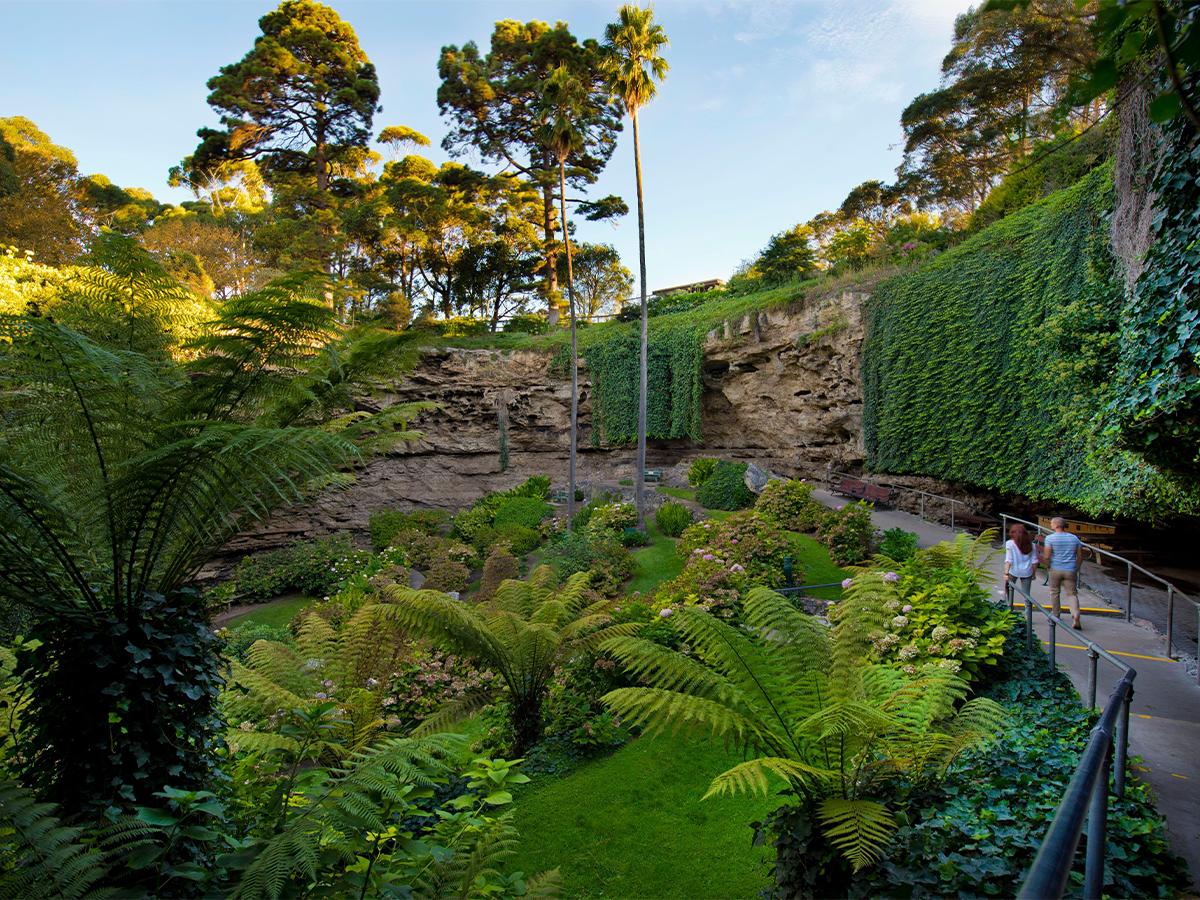
Reykjavik, Naples, Cartago; when you’re yearning to explore a dramatic volcanic landscape, there’s only one destination where the sinkholes – a depression caused by the collapse of the surface layer – are a celebration (particularly in the warmer months): Mount Gambier on South Australia’s spectacular Limestone Coast.
Proving that good things are worth the wait, geologists believe that Mount Gambier’s (justifiably) famous sinkholes are the result of rain on the region’s three fault lines breaking up the huge expanse of limestone -more than 25 million years old – spanning South Australia’s south-east. Water free-flowing through the limestone has formed 50 sinkholes, with at least 15 of them filled with water.
So when is the best time to take advantage of Mount Gambier’s sinkholes? While Mount Gambier itself – is a treat to visit year-round, aqua babies are best to plan a trip in the warmer months, between November and March, when the water is less biting and the colour morphs from a hue which can fall anywhere from steel grey or garden variety blue to vibrant cobalt. The good news? Whether you hire a car and drive to each spot (easily done since most of the major holes are located within a 20-minute drive of one another) or book a tour, there’s the perfect sinkhole experience for every kind of traveller including these tourism-heavy hitters.
Will it be snorkelling, scuba diving, free diving or a sinkhole tour of the training site for the South Australian Police? At Kilsby Sinkhole, located on a sheep farm among the rolling grasslands of Moorak just 14 kilometres south of Mount Gambier, you can choose all of the above.
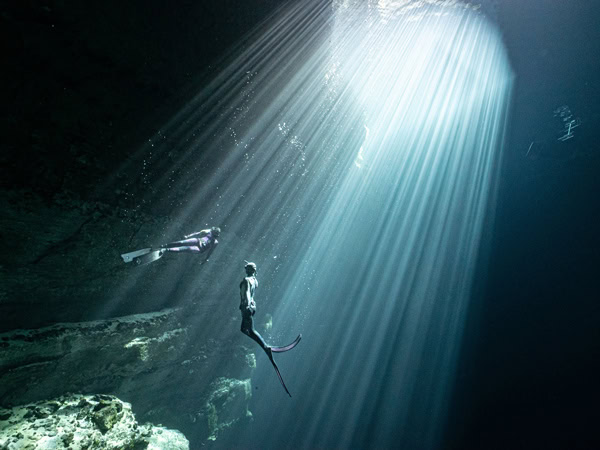
Kilsby Sinkhole is a naturally occurring karst basin. (Image: Adam Stern)
Out here, where it’s not unusual for people to show up in mermaid outfits for the ultimate photoshoot, water clarity has drawn people to the site for decades, the giant chasm descending 65 metres and allowing up to 50 metres (most days) visibility for scuba drivers and freedivers, and pristine water clarity for those who prefer to frolic towards the surface. 50-minute guided tours cover the sinkhole’s fascinating history and geology – a real hit with the kids.
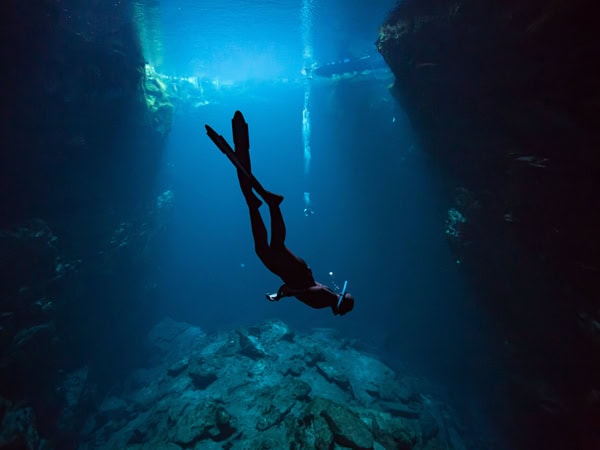
Dive beneath Kilsby Sinkhole like a mermaid. (Image: Jessie Cripps)
Snorkelling tours run for two hours, complete with a safety briefing and under the supervision of a snorkel supervisor, while those interested in diving and freediving can book a licensed operator to help your dream come true.
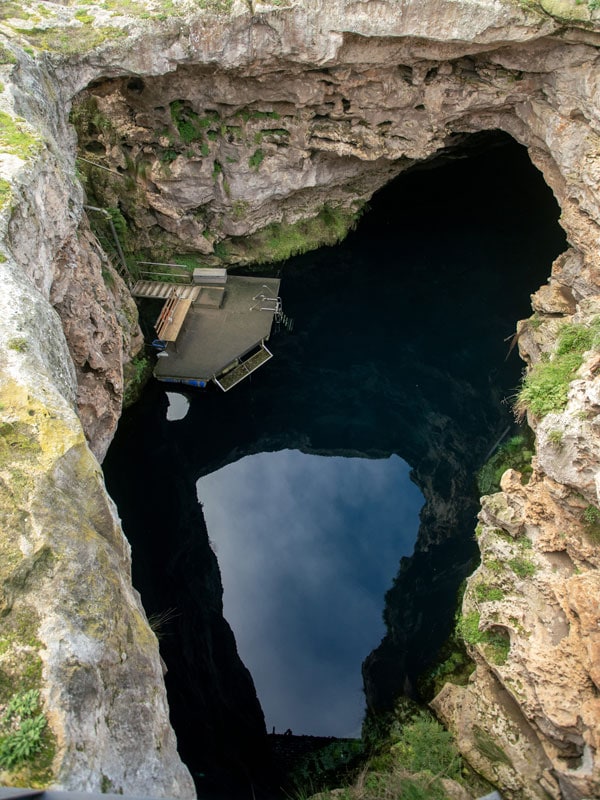
You’ll find Kilsby Sinkhole right in the middle of a working sheep farm. (Image: South Australian Tourism Commission)
Kilsby Sinkhole is a privately owned site, thus all visits must be pre-booked online. The good news? They now offer a range of two-bedroom luxury villas at a surprisingly affordable price point, so you can take advantage of the sinkhole (and its surrounds) day after day.
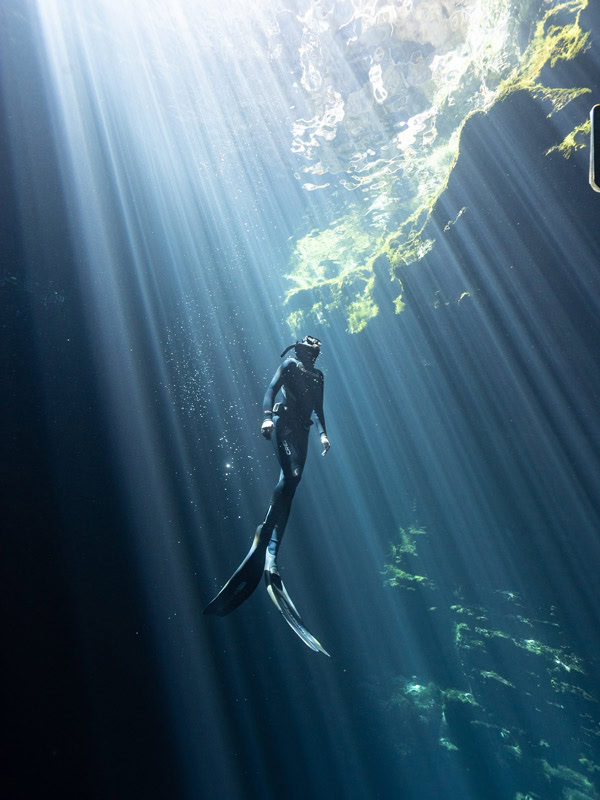
It’s a stunning sight when the sun rises over Kilsby Sinkhole. (Image: Adam Stern)
In the middle of Mount Gambier’s city streets, a lush, subterranean oasis blooms some 20 metres deep in a natural well providing cool respite for those who want to escape those blazing days, but don’t much fancy getting wet.
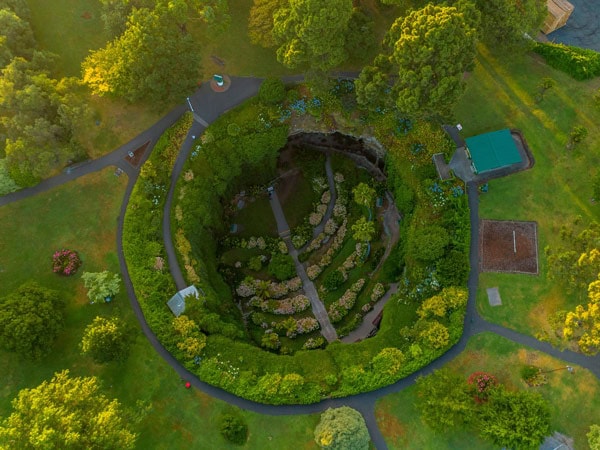
Umpherston Sinkhole is an otherworldly attraction with a plunging sunken garden. (Image: Offroad Images)
Named after its designer James Umpherston who designed this urban botanic garden in the late 1800s, Umpherston Sinkhole/Balumbul (one of the most photographed locations on the Limestone Coast) was once a cave formed through the dissolution of the limestone, becoming a sinkhole only after the top of its chamber collapsed and its topsoil provided the perfect environment on which flora to grow.
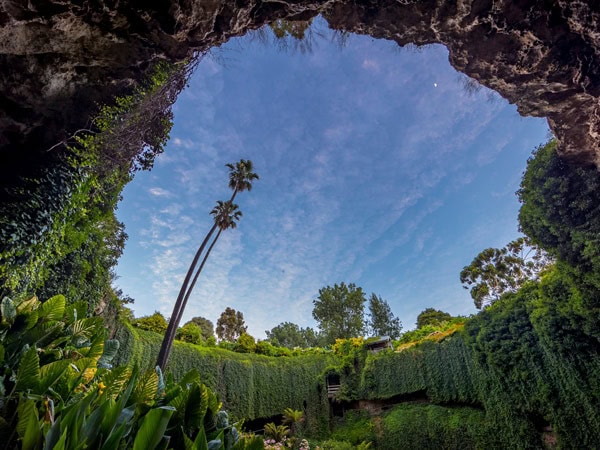
Subaquatic flora grow abundantly in Umpherston Sinkhole. (Image: Offroad Images)
Now it’s best described as a gateway to a secret world filled with hanging vines and terraces -the depth and scale which is best enjoyed from the viewing platforms before taking a walk down to the bottom to view the hydrangeas ((but only after grabbing an ice-cream or coffee from the onsite kiosk). Yep, at Umpherston Sinkhole, it’s all about walking and observing.
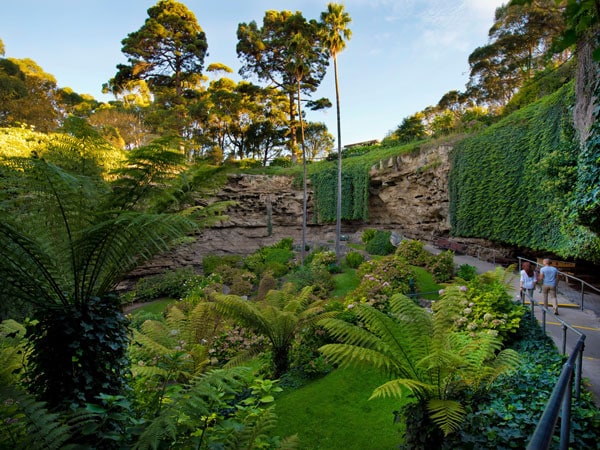
Stroll through the enchanting vines. (Image: South Australian Tourism Commission/Adam Bruzzone)
Beautiful any time of day, locals swear by a visit at dusk when the friendly locals, the Umpherston possums come out to greet their visitors. Why not stick around and make use of the free barbeque area?

Kids enjoy frolicking around the sinkhole’s lush greenery. (Image: South Australian Tourism Commission/Adam Bruzzone)
Disregard its name; Little Blue Lake is actually a sinkhole with a difference: the ability to change colour like a mood ring so that the steel grey it rocks throughout the winter months transforms into a vibrant cobalt blue come the summertime (November to March). It’s all thanks to a phenomenon caused by the formation of calcite crystals warming under the rays of the sun.
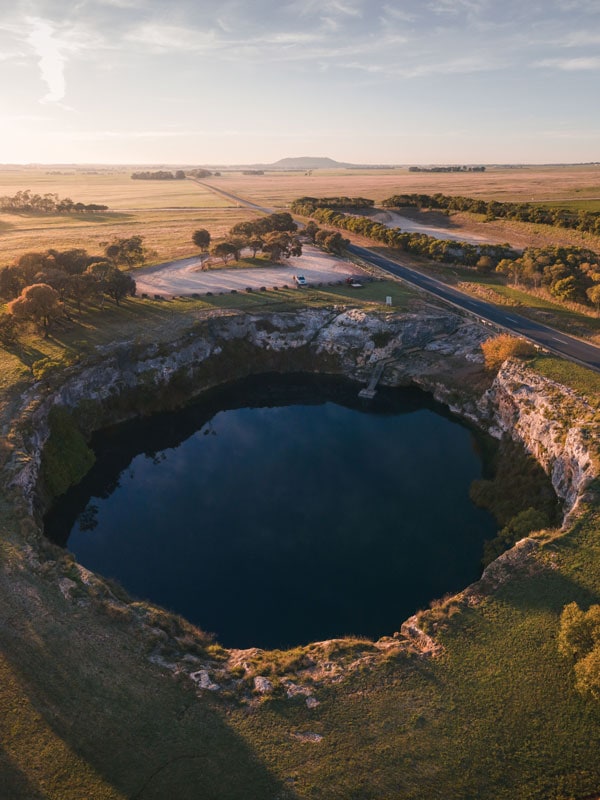
Little Blue Lake is situated within a dormant volcanic crater. (Image: Thomas Cowey)
Located in the Kanawinka volcanic area, wedged between the two (mercifully) dormant volcanoes of Mount Gambier and Mount Schank, follow the campervans making a line to Little Blue Lake, which is conveniently situated in a paddock by the highway.
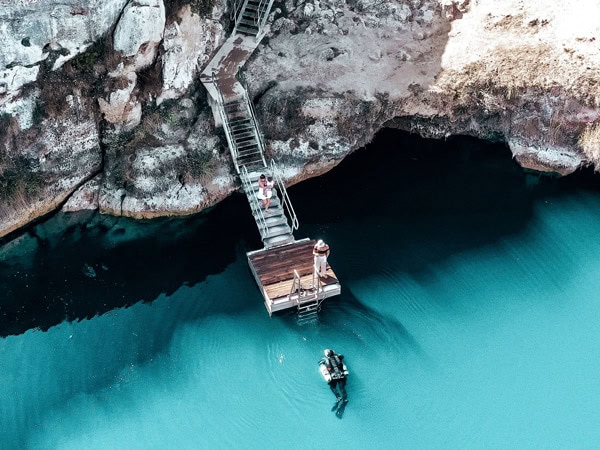
Mount Gambier’s Blue Lake transforms into milky turquoise between November and March. (Image: Lucy Adamopoulos)
With a 47-metre depth, plus a diameter of 40 metres, the lake is what you might call bracing – a fact locals love and visitors quickly get used to as they enter the sinkhole via the stairs or ramp. Your best bet? Warm up beforehand or afterwards by laying out in the sun, or by enjoying a picnic (you’ll have to bring your own provisions). Just beware that there are no public amenities so best use the bathroom before you depart from your accommodation.
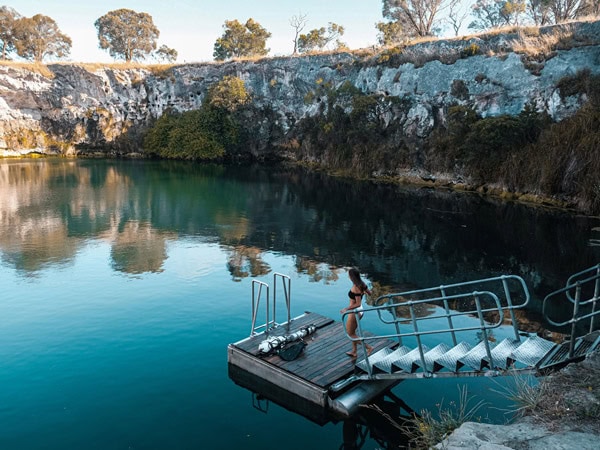
The navy blue waters summons you to swim in it. (Image: Lucy Adamopoulos)
Got plenty of time in and around Mount Gambier up your sleeve and are keen to experience further sinkholes? Be sure to also put Ewens Ponds, Hell’s Hole and Caroline Sinkhole on your list.
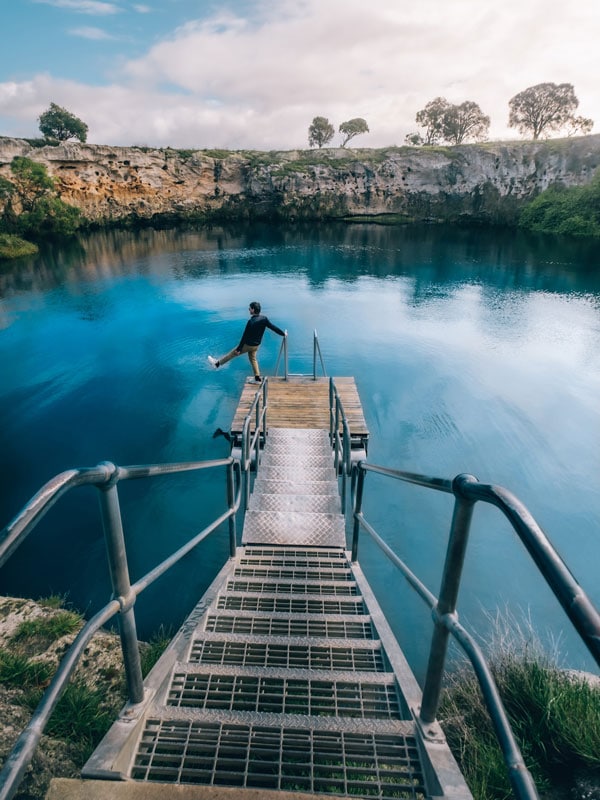
Let loose and submerge yourself into the Little Blue Lake. (Image: @paulpayasalad)
Wanting to explore the rest of Mount Gambier? Follow our guide for awe-inspiring things to do in Mount Gambier.
LEAVE YOUR COMMENT